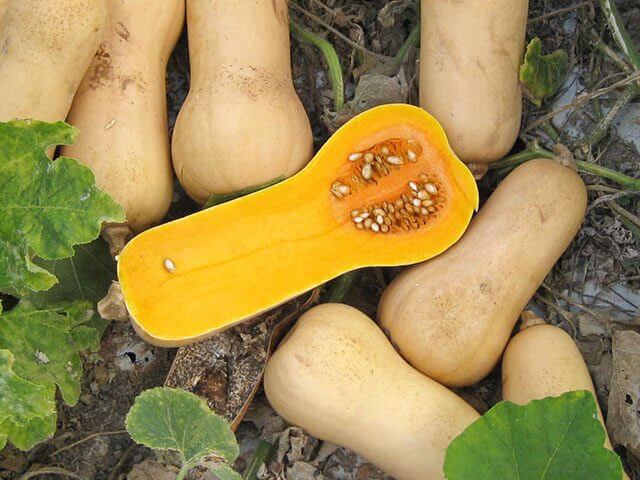No products in the cart.
Return To Shop
0
₦0.00
0
Shopping cart (0)
Subtotal: ₦0.00
Spend ₦500.00 to get free shipping Congratulations! You've got free shipping.
Log in / Sign up
Login Register
Maize Hybrid Seeds Variety (SC...
₦8,500.00


Dwarf Tenera Oil Palm Sprouted...
₦90,000.00
Butternut Squash Seeds Jacqueline F1 Butternut (1000 Seeds)
₦28,500.00
Quantity: a thousand seeds
Crop: Pumpkin
Crop Type: Butternut
Weight: 1.5 – 2 kg
25 people are viewing this product right now
Please, activate Compare option to use this widget.
SKU: butternut-squash-seeds-jacqueline-f1-butternut-1000seeds Categories: Seeds & Seedlings Tags: Butternut, F1, Jacqueline, Seeds, Squash
Estimated delivery:4 days
Share:
Butternut Squash Seeds is an orange-fleshed winter squash, celebrated for its versatility and candy, nutty flavor. Though normally thought of as a vegetable, Butternut Squash Seeds are technically a fruit. It has many culinary makes use of and makes a first-rate addition to many sweet and savory recipes. Butternut Squash Seeds aren’t the best tasty however additionally pack a punch of vitamins, minerals, fiber, and antioxidants.
How To Cultivate Butternut Squash
Like most other vining vegetables, butternut squash cultivation starts with a row. Draw your lawn soil into a row about 18 inches (46 cm.) high. This lets in the soil to heat around the seeds and roots. Your soil ought to be nicely amended and nicely fertilized given butternut squash plant life is heavy feeders. Plant 5 or six seeds in line with hill approximately 4 inches (10 cm.) aside and 1 inch (2.5 cm.) deep. Keep the soil moist, however no longer soggy. In about 10 days, the seeds will sprout. When they’re approximately 6 inches (15 cm.) high, thin out the weakest leaving three vegetation in keeping with the hill.
The butternut squash developing season is about one hundred ten-one hundred twenty days for fruit maturation, grow the interior in a nursery for six weeks t as you will maximum vegetables, in the correct soil in a sunny window or greenhouse and transplant them to the garden. Please recollect to harden off the seedlings before transplanting.
Butternut squash cultivation takes up a tremendous deal of area in the home garden. Each row should have at least fifty rectangular feet for growing. Butternut squash seeds can ship out vines up to fifteen toes (four. Five m.) long.
Fertilize properly at some point in the butternut squash developing season. Regular feeding will produce the maximum abundant crop as will retaining the hills weed-free. Butternut squash cultivation needs to be finished with the aid of a hand or with a hoe. Don’t cultivate too deeply for the reason that roots are shallow. Watch cautiously for bugs and when the need arises, use insecticidal soap or observe pesticides inside the night while the bees have lower back to the hive given that bees are crucial to developing butternut squash effectively.
Your squash might be prepared for harvesting whilst the pores and skin turn hard and are difficult to pierce together with your thumbnail. Butternut squash may be roasted or boiled and makes a mainly tasty substitute for pumpkin in pie.
Frequently Asked Questions (FAQs) about Butternut Squash Seeds
Planting:
- How deep do I plant butternut squash seeds? Plant butternut squash seeds 1 inch (2.5 cm) deep.
- How far apart should I plant butternut squash seeds? Plant 5 or 6 seeds per hill, with each hill spaced 4 inches (10 cm) apart.
- How long does it take for butternut squash seeds to germinate? Butternut squash seeds should germinate in about 10 days.
- Can I start butternut squash seeds indoors? Yes, you can start butternut squash seeds indoors for 6 weeks before transplanting them outdoors.
- How much space do butternut squash plants need? Each row of butternut squash should have at least 50 square feet of space for the vines to grow, which can reach up to 15 feet (4.5 m) in length.
Care:
- How often should I fertilize butternut squash plants? Fertilize butternut squash plants regularly throughout the growing season for optimal yield.
- How do I weed around butternut squash plants? Weed around butternut squash plants by hand or with a hoe, being careful not to cultivate too deeply as the roots are shallow.
- What pests and diseases can affect butternut squash plants? Look out for common garden pests and diseases. Use insecticidal soap or organic pesticides (applied at night when bees are less active) if necessary.
Harvesting:
- How do I know when butternut squash is ripe? Butternut squash is ready for harvest when the skin is hard and difficult to pierce with your thumbnail.
- How to use butternut squash? Butternut squash can be roasted, boiled, or used as a substitute for pumpkin in pies.
Only logged in customers who have purchased this product may leave a review.

Reviews
There are no reviews yet.